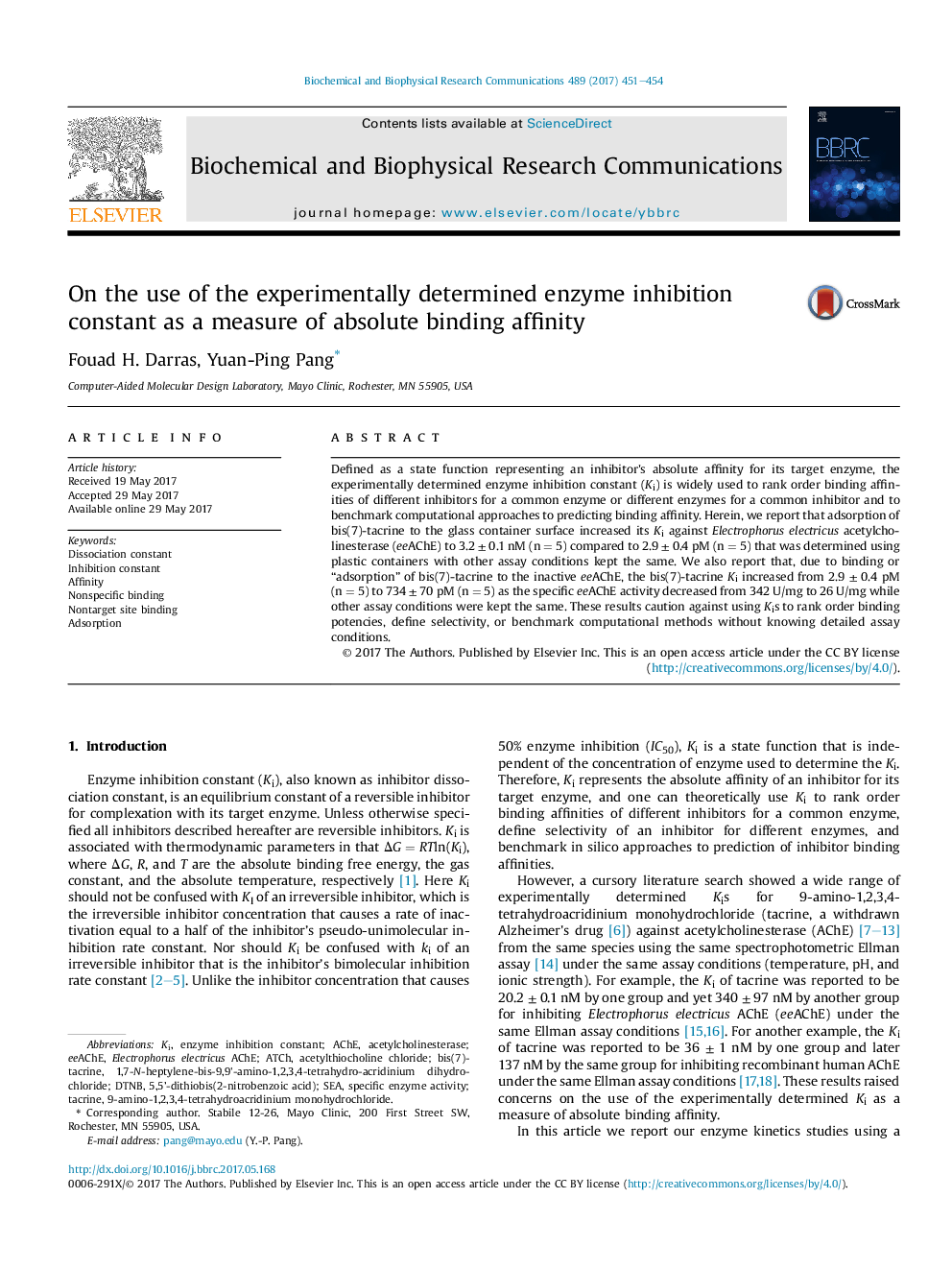| کد مقاله | کد نشریه | سال انتشار | مقاله انگلیسی | نسخه تمام متن |
|---|---|---|---|---|
| 5505075 | 1400260 | 2017 | 4 صفحه PDF | دانلود رایگان |
- Inhibition constant (Ki) is widely used as an absolute binding affinity indicator.
- We show that the container surface can serve as a nontarget site for test inhibitors.
- We also show that inactive enzyme can serve as a nontarget site for test inhibitors.
- These sites change Ki by up to 1000-fold if not factored in the Ki determination.
- We caution against using Ki as an affinity indicator without detailed assay conditions.
Defined as a state function representing an inhibitor's absolute affinity for its target enzyme, the experimentally determined enzyme inhibition constant (Ki) is widely used to rank order binding affinities of different inhibitors for a common enzyme or different enzymes for a common inhibitor and to benchmark computational approaches to predicting binding affinity. Herein, we report that adsorption of bis(7)-tacrine to the glass container surface increased its Ki against Electrophorus electricus acetylcholinesterase (eeAChE) to 3.2 ± 0.1 nM (n = 5) compared to 2.9 ± 0.4 pM (n = 5) that was determined using plastic containers with other assay conditions kept the same. We also report that, due to binding or “adsorption” of bis(7)-tacrine to the inactive eeAChE, the bis(7)-tacrine Ki increased from 2.9 ± 0.4 pM (n = 5) to 734 ± 70 pM (n = 5) as the specific eeAChE activity decreased from 342 U/mg to 26 U/mg while other assay conditions were kept the same. These results caution against using Kis to rank order binding potencies, define selectivity, or benchmark computational methods without knowing detailed assay conditions.
Journal: Biochemical and Biophysical Research Communications - Volume 489, Issue 4, 5 August 2017, Pages 451-454
